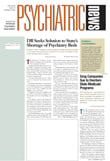For an argument to be effective, it must be structured. Debate relies on a structure that places two teams on opposite sides of a resolution, or policy statement. This year’s resolution for the 2002-03 National Forensic League is that the federal government should substantially increase public health services for mental health care in the United States.
There are eight speeches in a debate, and each side makes four speeches.
The first four speeches for one side are called constructive speeches, and the remainder are called rebuttals. Each team is allotted two constructive speeches to deliver its case, as well as two rebuttals to attack the other team’s argument and defend its own.
The structure of the debate is as follows:
• First affirmative constructive (1AC): This is the only speech that is written and delivered by the first affirmative team member. The affirmative team presents a number of problems in the status quo and how these problems can be solved by their plan of action.
• Cross-examination of 1AC by second negative constructive (2NC): In this cross-examination, the second negative team member asks pointed questions about the mechanics of the plan to better understand what the affirmative team proposes. He or she also asks questions that may draw out contradictions or flaws in the arguments of the first affirmative team member.
• First negative constructive (1NC): The first negative team member lays out the basis for the negative team’s case against the affirmative team’s case. During this speech, the negative may contest the affirmative team’s evidence, state that the affirmative team’s plan of action is already being done or that there are no problems with the status quo, or state that the affirmative plan’s solution is ineffective.
• Cross-examination of 1NC by 1AC: The second affirmative constructive (2AC) is a speech that responds to the first negative and is an extension of the first affirmative speech.
• Cross Examination of 2AC by 1NC: The second negative constructive (2NC) s an expansion of the first negative case. Sometimes the second negative team member might choose to raise new issues to support the negative case.
• Cross-examination of 2NC by 2AC: In the first negative rebuttal (1NR), the first negative team member refutes the second affirmative constructive in defense of the negative case.
• First affirmative rebuttal (1AR): This is the most difficult speech. The first affirmative team member must respond to all arguments that the negative made in the second negative in the 2NC and the first negative in the 1NR.
• Second negative rebuttal (2NR): The second negative team member responds to the first affirmative rebuttal and summarizes the negative case. This is the last speech of the negative team.
• Second affirmative rebuttal (2AR): This is the last speech of the debate. The second affirmative team member responds to the second negative rebuttal and summarizes the affirmative position.
